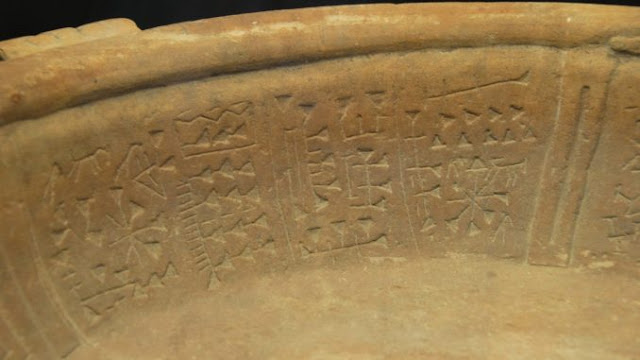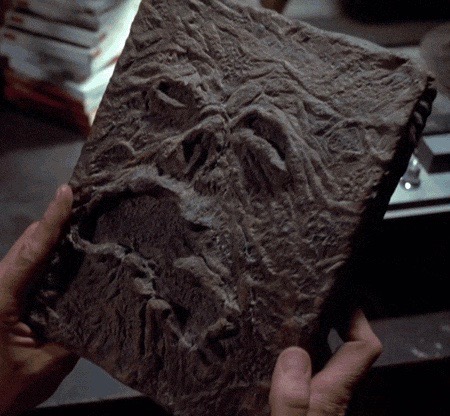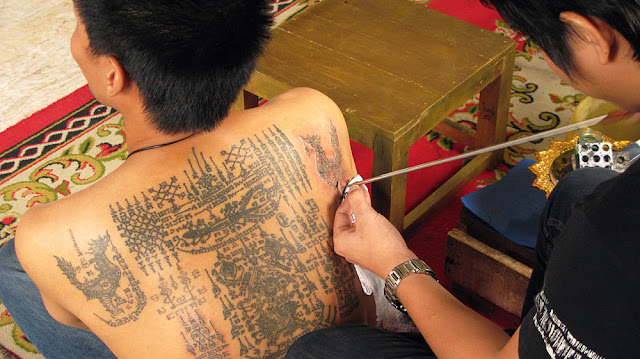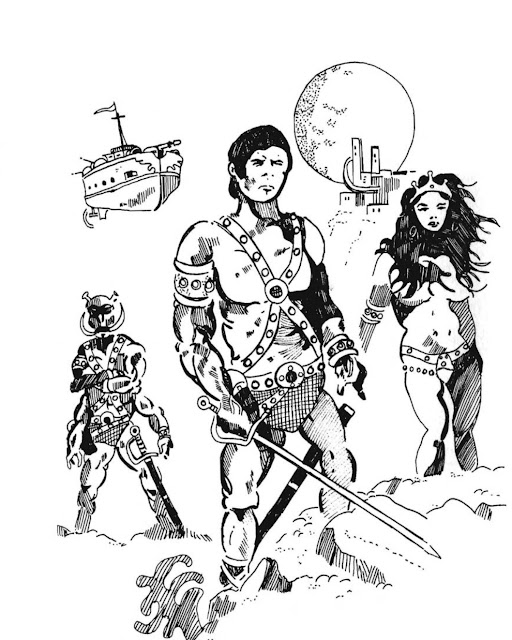Spell Books
I decided to review some rules on Magic-User Spell Books from several D&D rule books.
OD&D
The Book of Spells
Men & Magic, 1974
1. A book for each level of spells
2. Duplicates will cost the amount to research the spells in it.
Supplement I Greyhawk, 1976
1. How many spells the Magic-User potentially knows (minimum and maximum) per level determined by his Intelligence is introduced to the game. Each spell is rolled for until either minimum number is reached because player failed rolls or maximum number is reached... these are the spells in his book.
D&D Basic Rules, Holmes, 1978
1. Magic-Users cannot bring their magic books into the dungeon with them. Instead they should prepare scrolls.
2. Continues to determine number of spells the Magic-User potentially knows minimum and maximum per level by his Intelligence. Each spell is rolled for until either minimum number is reached because player failed rolls or maximum number is reached... these are the spells in his book.
AD&D Player’s Handbook, 1978
1. Uses Intelligence ability to determine the player’s spells. The chance to know is used to determine if they can ever learn that spell.
2. Minimum and Maximum spells are determined for each new casting level.
3. Changes in Intelligent that are permanent require rerolling the spells they already posses if they lost Intelligence and rerolling to see if they gained the ability to learn more if their Intelligence went up.
4. Suggests Players should choose which spells they want to try and learn.
5. Has different spell books being maintained for different levels.
6. The ability to create scrolls to replace hauling the book around on an adventure is only accessible at 11th Level.
D&D Basic, Moldvay, 1981
1. Spell Books may now have multiple level of spells in them.
2. No mention of not being able to bring the Book of Spells on the adventure.
3. DM may choose to assign the spells in the book or allow the player to select them from the spell list.
4. No use of Intelligence Ability to help determine how many spells may or may not be in the players Book of Spells.
D&D Basic, Mentzer 1983
1. DM assigns 2 spells for the Spell Book.
2. Spell Book dimensions given: 2 feet square, 2-6 inches thick and weighs 20 lbs. It will not fit into a bag but will fit in a backpack or saddlebag.
3. All future spells will be given by DM who is playing the part of the Magic-Users teacher (at least 7th Level Magic-User).
4. Different Magic-Users will have different spells in their books even if the same level.
5. At 4th Level PCs often are released by their teacher to go out and seek more spells for themselves after the teacher gives them one more 2nd level spell.
6. Magic-Users do not trade spells, they do not allow others to read their spell book except for their teacher, the risk of loss or damage to the book is too great.
7. Spell Scrolls can be used to enter new spells into the players book of magic, doing so uses up the scroll, and if the spell is to high a level to be cast the player may not enter it into his book. However it can be saved for latter recording into the magical tome when the player reaches a level that allows him to cast the spell. Interestingly such higher level scrolls maybe used to cast the spell regardless of the users lower level.
Rules Cyclopedia, 1991
1. Seems to indicate all known spells to the player are in the same Grimoire.
2. Spell Books are written in magical language that only the owner of the book can understand, all others need to cast a Read Magic Spell to understand.
3. Spell Book is given to the player character by his teacher.
4. It will contain 2 1st level spells of the DM’s choosing.
5. Spell Book dimensions given: 2 feet square, 2-6 inches thick and weighs 20 lbs. It will not fit into a bag but will fit in a backpack or saddlebag.
6. Warns not to confuse Spell Slots (spells memorized for that day) with number of spells in player’s Tome.
7. Does not limit the number of spells that can be recorded in the Spell Book.
8. At 4th Level PCs often are released by their teacher to go out and seek more spells for themselves after the teacher gives them one more 2nd level spell.
9. Trading of spells to be discouraged between players and punished, including but not limited to theft or destruction of spell book, being black balled by the magical community. Magic Users value their secrets and are paranoid.
10. Acquiring a new teacher to learn new spells at higher levels can happen.
11. Spells as rewards by other magic-users for doing something for them.
12. Scrolls can be used to gain spells for his book.
13. Lost Spell Book replacement rules. Reconstructing books are more expensive than creating a back up copy to hide someplace. (Player can make a copies of his book).
14. Spells higher than he can cast can not be put in his book.
15. PCs may gain other Magic-Users (theft, purchase, killing previous owner) books, these books should only contain a few new spells, these books should be well hidden, have curses and magical traps triggering before any new spell is revealed. Most spells in them should be spells the PC already has.
Rules for my settings Spell Books Rules will be mostly based on the Cyclopedia Rules. I am modify the casting recording rules to align with Chainmail’s rules... but failure will have consequences for the player and their book when adding a spell above the PC’s casting ability. The most common spells will be based on Chainmail’s list of spells and abilities. I will be adding in details to the Spell Books that will help create atmosphere for the setting.
Pondering the rules, fantasy, horror story tomes of magic, religious and historic books... and how it all might apply to Magic-User books, Clergy texts and even more mundane books in D&D.
After reviewing the rules I decided to ponder how the rules make the most sense to me and do a little cursory research on “books”. I can understand not hauling around a huge Tome adventuring. The Teacher may desire the student not to stray so safe keeps the students book, thus causing the student to return quickly. Thus from this point of view the player character leaving his book behind makes sense. This also forces the DM and players to create a home based from which to return, protect and develop storyline related NPC relationships for plot purposes. If this logic is used then when the player character reaches the level the teacher considers Journeyman (4th level is indicated in the rules) they get their book and told to go out into the wider world to find more magic.
D&D admittedly is heavily influenced by the idea that all spell books are huge tomes that you could bludgeon someone to death with. (An emergency option for Wizards when they run out of spells and the dagger isn’t cutting it in combat). The awe inspiring cinematic Grimoire so often seen in movies is the type of book people think of. Historically illuminated manuscripts including magical texts of various ages came in a wide range of sizes that included some rather small fine books... if I allow tiny books they will be super rare and expensive.
Books also can come in a variety of materials which can effect size, weight, durability and availability. Books and Spell sources need not be traditional Grimoire style... Clay Tablets, Tortoise Shell, Bamboo, Bone, Wood, Palm Fronds, Papyrus, Carved or Painted on Tomb Walls, Metal Plates, Stone, Vellum (animal skin), Pottery are a few real world examples of writing materials.
I researched manuscript making and discovered often very specific instructions for specific animals, of specific ages are given, plants and other materials, mostly people assume a lot of silly symbolic reasons for this. I delved a bit deeper and found the historical practical reasons behind most instructions for materials. Unborn animal skin for example makes extremely fine pages allowing the book to have many more pages. The reason behind certain wing feathers for quills has to do with the curve of the quill for optimum writing in the right hand. A plant picked at a specific season may produce a specific dye color only then. Some materials like the material a mixing pot is made of that the ingredients are mixed or cooked in might cause a desired chemical reaction or prevent a reaction thus effecting the out come of the product.
From a historic and fantasy point of view materials could definitely be specific in ones game world for lots of reasons, helping to justify the expense and setting the atmosphere of your game world. Imagine how Dwarf Religious texts would look vastly different than Elf ones... I can imagine books made of extremely thin metal sheets in Dwarf Temples and Books made of Leaves in Elf Temples for example. Magical or Religious texts that can only be read when specific environmental conditions are met. Culturally Human Magic User Spell Books might be made out of vastly different materials than Elven Magic User Spell Book even though the spells in both texts are the same spells. In addition because magical schools, cultures and individuals use specific and unique scripts that adds further depth to the setting.
Sometimes though real life symbolism is involved in real life books and some creepy weird stuff is not made up....
Historically there are books that are bound with human skin they are extremely rare and creepy for real moments in history. Here is one.... Bristol Record Office Ledger... It is the trial record of the man found guilty of murder, which the town decided to bind his trial records in his own skin... now that is a message to any other future would be murders. That sort of law book in game play would make player’s not want to get arrested in that town! I also read about a Doctor how made books out of his dead patients... hearing that rumor in the tavern that there is a local healer that binds his books in the dead skins of his patients might put players on edge.
The idea then of Grimoire’s made of sentient beings skins in some campaigns settings as either a required part of making the Tomes or just particularly evil books such as one finds in horror stories might be a terrible aspect of magical book making to consider.
Magic up those Books of Spell: why not give them a creepy eye, a mouth that screams, bites hands, an Intelligence of their own... maybe the more magic that is put into the book the weirder it gets, maybe that is one reason Magic Users leave them home! A book that screams, argues, refuses to open if it thinks it is too dangerous to do so could be very problematic for a Magic User. Truly ancient tomes might have effects on people who use them in much the same way Magic Swords do.
Tattoos as the spell book, the Magic User is a walking tome! Certainly that would explain why every Magic User wears robes in all climates! This is an idea I came across on the net and in that setting it is not unheard of for Magic-Users to actively be trying to murder each other to get the other’s skin to gain new spells... that certainly puts the horror and paranoia into the game. The idea of maps tattooed on people occurs frequently enough in plots so it is an interesting option. One could instead rule the tattoos work like scrolls and disappear after use and must be reapplied by the Magic User tattoo artist in the same Wizard’s College as the PC. Magic Users would still hunt each other and tan dead Magic User skins into scrolls for latter use or additions to their books. Dark stuff... for sure.
Books hidden in Books... writhing materials were very expensive and more and more texts some thought lost forever, upon being analyzed with modern scientific tools are being found under other text. The scribes would scrape clean the vellum of books and recycle the book for new use. There are lots of reasons this happened, changes in religion, language, lost knowledge and so on... it was the Dark Ages for a reason... what is lurking in those bargain priced recycled vellum book the PC used to start his Book of Spells?
Happy Gaming!
























Comments
Post a Comment